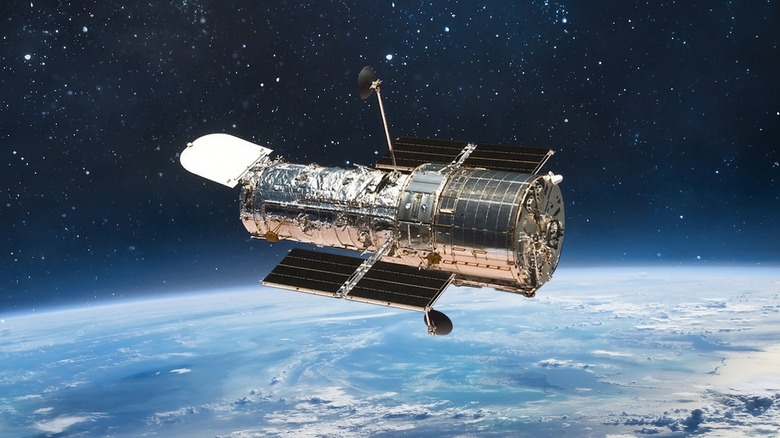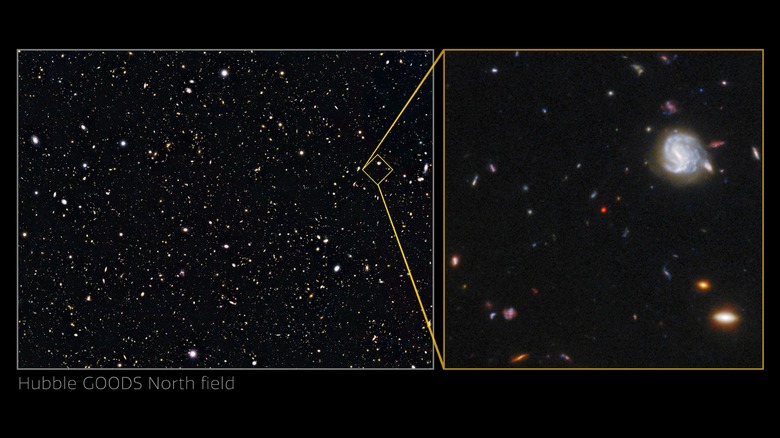How Hubble Helps Researchers Learn How Supermassive Black Holes Form
At the heart of almost every galaxy we know of lies a monster: an enormous black hole, so large it is called a supermassive black hole. Scientists know that these huge black holes are important in the development of galaxies, but they still aren't sure exactly how they evolve and grow to be so big. Now, new research using data from the Hubble Space Telescope is helping to answer this question.
Astronomers have identified a black hole that is growing fast and appears to originate at one of the earliest stages of the universe – as early as 750 million years after the Big Bang. By studying this black hole, called GNz7q, they can learn about the relationship between early galaxies and some of the first supermassive black holes (via Hubble). The researchers were able to spot this black hole by combing through older Hubble data covering an area of the sky called the Great Observatories Origins Deep Survey-North (GOODS-North) field. This allowed them to spot this growing black hole and the star-forming galaxy in which it resides.
"Our analysis suggests that GNz7q is the first example of a rapidly growing black hole in the dusty core of a starburst galaxy at an epoch close to the earliest supermassive black hole known in the universe," said Seiji Fujimoto, lead author of the research paper. "The object's properties across the electromagnetic spectrum are in excellent agreement with predictions from theoretical simulations."
The mystery of supermassive black holes
Scientists know about two stages in the formation of supermassive black holes: the point at which they are born in the center of stellar nurseries called starburst galaxies and the period when they eventually form the heart of a very bright type of galactic nucleus called a quasar. However, the span of time between one stage to the other and the evolution therein remains something of a mystery.
That's why this discovery is so important — researchers think that GNz7q is the missing link between a black hole's birth and its formation in a quasar. The space object GNz7q is not bright enough to be a full-blown quasar, but it is surrounded by dust like a starburst galaxy. Researchers have predicted they would find objects like this using scientific models, but this is the first time they have actually identified such an object out in the wild. Studying it will very likely help researchers understand how supermassive black holes evolve.
"GNz7q provides a direct connection between these two rare populations and provides a new avenue toward understanding the rapid growth of supermassive black holes in the early days of the universe," Fujimoto said, (via Hubble). "Our discovery provides an example of precursors to the supermassive black holes we observe at later epochs."
It was fortunate that the researchers could identify GNz7q because it was a metaphorical needle in a haystack of data. The researchers that worked on this study want to use surveys to identify more black holes like GNz7q that will then be studied in detail using instruments like the new James Webb Space Telescope, which is expected to begin science operations in full swing at some point in the year 2022.

